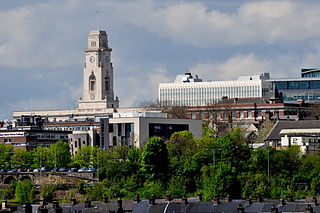Percy Houghton was Archdeacon of Waitemata from 1940 until [1] his death in 1954. [2]
Houghton was educated at Hatfield College, Durham and ordained in 1904. After curacies in Barnsley, Woodhouse and Almondbury he held incumbencies at Brooklyn and Auckland. He was Vicar general of the Anglican Diocese of Auckland from 1944 to 1949. [3]

A curate is a person who is invested with the care or cure (cura) of souls of a parish. In this sense, "curate" correctly means a parish priest; but in English-speaking countries the term curate is commonly used to describe clergy who are assistants to the parish priest. The duties or office of a curate are called a curacy.

Barnsley is a town in South Yorkshire, England, located halfway between Leeds and Sheffield. Historically in the West Riding of Yorkshire, the town centre lies on the west bank of the Dearne Valley. Barnsley is surrounded by several smaller settlements which together form the Metropolitan Borough of Barnsley, of which Barnsley is the largest and its administrative centre. At the 2011 Census, Barnsley had a population of 91,297.

Almondbury is a village 2 miles (3.2 km) south-east of Huddersfield town centre in West Yorkshire, England. The population of Almondbury in 2001 was 7,368 increasing to 18,346 at the 2011 Census.

